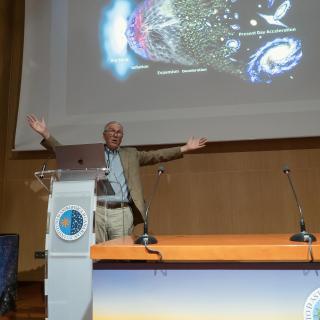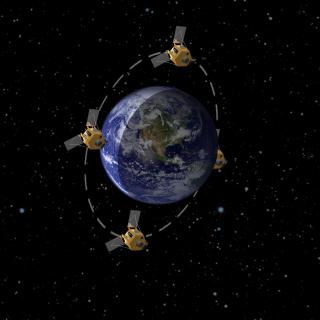It may interest you
-
 The Instituto de Astrofísica de Canarias (IAC) has received a visit from Robert P. Kirshner, Executive Director of the Thirty Meter Telescope International Observatory (TIO) . During his stay at the IAC headquarters in La Laguna, he was welcomed by the center’s director, Valentín Martínez Pillet, and by the deputy director, Eva Villaver Sobrino, along with other members of the research institute. During his visit, he was able to learn firsthand about the institution’s scientific and technological capabilities and gave a colloquium titled The Thirty Meter Telescope and Science of the FutureAdvertised on
The Instituto de Astrofísica de Canarias (IAC) has received a visit from Robert P. Kirshner, Executive Director of the Thirty Meter Telescope International Observatory (TIO) . During his stay at the IAC headquarters in La Laguna, he was welcomed by the center’s director, Valentín Martínez Pillet, and by the deputy director, Eva Villaver Sobrino, along with other members of the research institute. During his visit, he was able to learn firsthand about the institution’s scientific and technological capabilities and gave a colloquium titled The Thirty Meter Telescope and Science of the FutureAdvertised on -
 Científicos del IAC publican en Nature Astronomy una guía práctica para mejorar propuestas y solicitudesAdvertised on
Científicos del IAC publican en Nature Astronomy una guía práctica para mejorar propuestas y solicitudesAdvertised on -
 El Instituto de Astrofísica de Canarias (IAC), a través de su departamento IACTEC-Espacio, celebra hoy la System Requirements Review (SRR) de la misión IACSAT-1, un hito clave que marca la finalización de la fase B1 del proyecto y consolida todos los requisitos técnicos, científicos y programáticos necesarios para avanzar hacia el diseño preliminar del satélite. IACSAT-1 es la primera misión liderada íntegramente por el IAC dedicada a la observación astronómica desde el espacio. Se trata de un proyecto desarrollado por IACTEC-Espacio, con un equipo científico dirigido por el Prof. RafaelAdvertised on
El Instituto de Astrofísica de Canarias (IAC), a través de su departamento IACTEC-Espacio, celebra hoy la System Requirements Review (SRR) de la misión IACSAT-1, un hito clave que marca la finalización de la fase B1 del proyecto y consolida todos los requisitos técnicos, científicos y programáticos necesarios para avanzar hacia el diseño preliminar del satélite. IACSAT-1 es la primera misión liderada íntegramente por el IAC dedicada a la observación astronómica desde el espacio. Se trata de un proyecto desarrollado por IACTEC-Espacio, con un equipo científico dirigido por el Prof. RafaelAdvertised on
